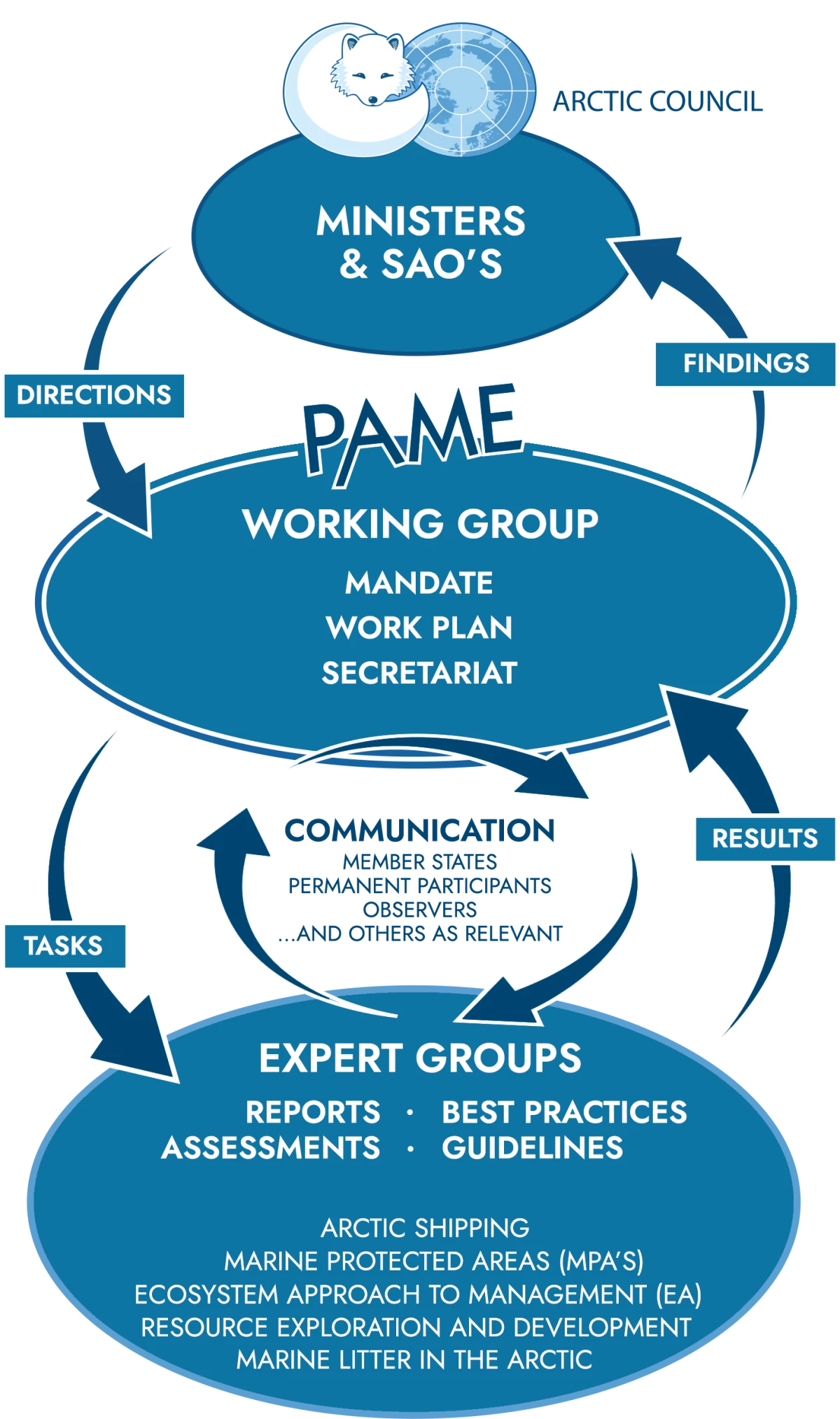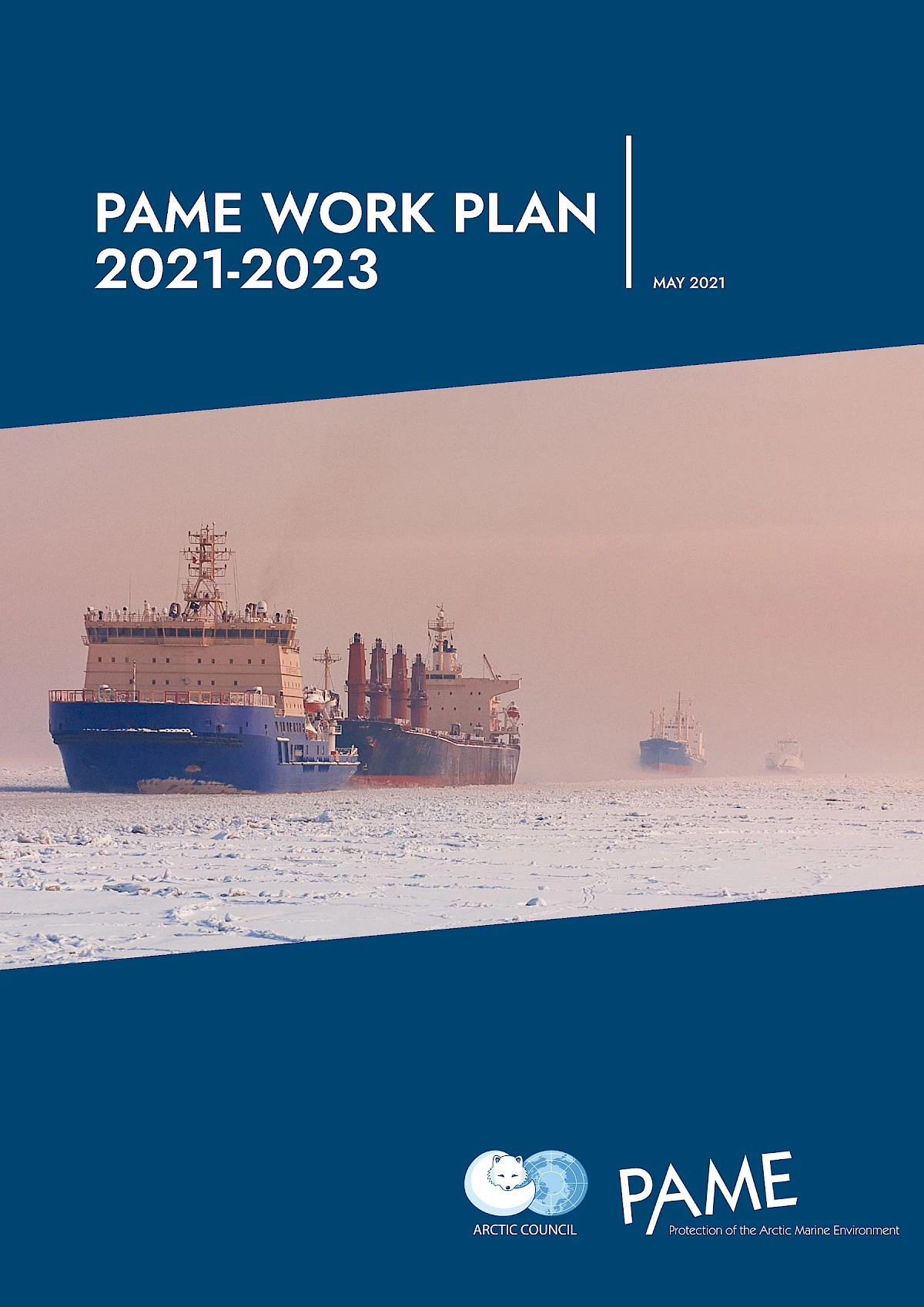About
Protection of the Arctic Marine Environment (PAME) - Working Group of the Arctic Council
PAME is the focal point of the Arctic Council’s activities related to the protection and sustainable use of the Arctic marine environment and provides a unique forum for collaboration on a wide range of activities in this regard.
PAME is one of six Arctic Council Working Groups. PAME was first established under the 1991 Arctic Environmental Protection Strategy and was continued by the 1996 Ottawa Charter that established the Arctic Council.
PAME carries out activities as set out in bi-annual work plans approved by the Arctic Council on the recommendation of the Senior Arctic Officials. These activities address marine policy measures and other measures related to the conservation and sustainable use of the Arctic marine and coastal environment in response to environmental change from both land and sea-based activities, including non-emergency pollution prevention control measures such as coordinated strategic plans as well as developing programs, assessments and guidelines, all of which aim to complement or supplement efforts and existing arrangements for the protection and sustainable development of the Arctic marine environment.
The PAME Working Group consists of National Representatives responsible for its work in their respective countries. Permanent Participants, representing Arctic indigenous groups, also participate in PAME, as well as representatives of several observer countries and interested organisations. PAME provides a unique forum for collaboration on wide range of Arctic marine environmental issues.
PAME generally meets twice a year to assess progress of work, discuss program priorities and develop its biennial work plans.
PAME reports to the Senior Arctic Officials, and through them, to the Ministers of the Arctic Council that meets every two years.
PAME is headed by a chair and vice-chair, which rotate among the Arctic countries and is supported by an International Secretariat, based in Akureyri, Iceland.

PAME MANDATE
"To address marine policy measures and other measures related to the conservation and sustainable use of the Arctic marine and coastal environment in response to environmental change and from both land and sea-based activities, including non-emergency pollution prevention control measures such as coordinated strategic plans as well as developing programs, assessments and guidelines, all of which aim to complement or supplement efforts and existing arrangements for the for the protection and sustainable development of the Arctic marine environment."
PAME WORK PLAN
The Work Plan outlines what activities PAME works on at a given time. They include project descriptions and project plans.
The PAME Work Plan for 2021-2023 will continue until further notice - it has been developed according to:
- PAME’s mandate;
- priorities identified and recommendations made within Arctic Council approved reports; direction provided from Ministerial Declarations;
- follow-ups on recommendations from Arctic Council projects and the AMSP (2015-2025), which outlines the overall direction of the Arctic Council for the protection of the Arctic marine environment; and
- policy follow-up on the scientific and other relevant assessments of the Arctic Council.
Additional project proposals may be developed within the scope of this WP between subject to PAME approval, confirmed lead/co-lead commitment and financing.
The Current Work Plan includes 36 projects/activities under these themes:
- Arctic Shipping (13 activities)
- Marine Invasive Species (1 project)
- Marine Litter in the Arctic (4 activities)
- Marine Protected Areas (6 activities)
- Ecosystem Approach to Management (7 activities)
- Resource Exploration and Development (4 activities)
- Arctic Marine Strategic Plan 2015-2025
PAME Meetings
Nov 1999: Akureyri, Iceland
Jun 2000 : Copenhagen, Denmark
Jan 2001: Washington D.C., USA
Oct 2001: Moscow, Russia
Apr 2002: Reykjavik, Iceland
Feb 2003: Stockholm, Sweden
Feb 2004: Helsinki, Finland
May 2004: Reykjavik, Iceland
Feb 2005 : Copenhagen, Denmark
Sep 2005: Alborg, Denmark
Mar. 2006: Oslo, Norway
Aug. 2006: Murmansk, Russia
Mar. 2007: Copenhagen, Denmark
Sep. 2007: Reykjavik, Iceland
Jun. 2008: St. John‘s, Canada
Oct. 2008: Helsinki, Finland
Oct. 2009: Oslo, Norway
Mar. 2010: Copenhagen, Denmark
Sep. 2010: Washington D.C., USA
Feb. 2011: Oslo, Norway
Sep. 2011: Reykjavik, Iceland
Mar. 2012: Stockholm, Sweden
Sep. 2012: Halifax, Canada
Feb. 2013: Rovaniemi, Finland
Sep. 2013: Rostov-on-Don, Russia
Feb. 2014: Alaska, USA
Sep. 2014: Whitehorse, Yukon, Canada
Feb. 2015: Akureyri, Iceland
Sep. 2015: Tromsö, Norway
Feb. 2016: Stockholm, Sweden
Sep. 2016: Portland, Maine, USA
Jan. 2017: Copenhagen, Denmark
Sep. 2017: Helsinki, Finland
Feb. 2018: Quebec City, Canada
Oct. 2018: Vladivostok, Russia
Feb. 2019: Malmö, Sweden
Sept. 2019: Reykjavík, Iceland
Feb. 2020: Oslo, Norway
Sept. 2020: Online
Feb. 2021: Online
Oct. 2021: Online
Nov. 2024: Online
 Arctic Council Working Group
Arctic Council Working Group 


